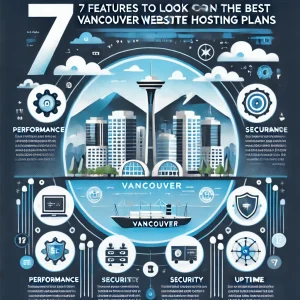 It’s increasingly rare these days to find a business that doesn’t have their own website. As is the case with every one of them, there’s a whole lot of work that goes into a website – planning, designing, and the actual construction of the different HTML elements that together make up those web pages we’re happy to just visit and browse through as we like.
It’s increasingly rare these days to find a business that doesn’t have their own website. As is the case with every one of them, there’s a whole lot of work that goes into a website – planning, designing, and the actual construction of the different HTML elements that together make up those web pages we’re happy to just visit and browse through as we like.
Be aware that there are choices you can make when putting your website together, however, that can have negative repercussions down the line and quite possibly sabotage the successes you envisioned for yourself when you decided to take your business onto the World Wide Web.
Start with the Right Conceptual Thinking
First off, all of the following are FALSE:
-
I need a flashy website that looks ‘cool’
Believe us when we tell you that substance trumps flush in a big way when it comes to the entirety of your online presence. Stressing to your web designer that it’s all-important to have a ‘cutting edge’ site is creating the wrong perspective for what you want to be accomplishing here.
Keep in mind that this isn’t a competition about ‘looks’, it’s about effectively conveying to your customers THAT WHICH IS IMPORTANT TO THEM – which, in nearly every instance, is a quality product or service that’s priced reasonably and comes with positive reviews from buyers just like them. What your website looks like will pretty much be the last of their considerations.
-
It’s always good to save few bucks by having my friend / relative / other design my website for a discount
For sure, hiring designers or developers with many years of experience and a proven portfolio of work can be expensive. The best professionals can and do charge what they do because – in addition to designing the website – they also often research, plan, and strategize the entire conversion process and site flow as well.
Needless to say, you stand to benefit IMMENSELY from this value-added part of their service, and these types of analytical approaches are very likely going to be beyond the ability of the guy or gal you know.
Hiring a qualified design pro can also mean that your project isn’t completed as quickly as you’d like. Without going on at length, we’ll just suffice to say that – again – any delay that’s related to making your website a more soundly constructed portal THAT WORKS TO SERVE YOUR MARKETING INTERESTS effectively is very much worth it in the long run.
Conversions, sales, followers, in-store visits (if you’ve got a brick n mortar) etc etc. – you want them, and working with a reputable and experienced web designer / developer is the straightest path to getting there.
-
A simple ‘electronic brochure’ is really all I need from my website
Maybe so if you’re fine with just staying where you are in as far as the size and scope of your business (and its success). In all likelihood though, you’d like to see more out of your business and in this day and age the BEST way to build your business is to promote it effectively online. And if we were to tell you that there’s not too much involved in going from an electronic brochure to a fully-vamped website, why wouldn’t you choose the one that’s going to give your more sales / service opportunities and make your brand all the more visible?
Right then.
Taking the Right Approach
This starts with answering one direct question – what is it that you need your website to do? The answer can vary, but it’s safe enough to assume that anyone who’s in business will have ‘helping us sell more of our product(s)’ at or near the top of their list.
So, with that understood, your website MUST:
-
Attract the right customers
Determine what your customer demographic has for a ‘buyer profile’ – how do they buy, when do they buy, what types of advertising / marketing collaterals are they attracted to? If you can’t answer these questions yourself, it’s very wise to hire someone who can analyze these correctly for you
Once these questions are answered, your designer should be able to start making design choices that are in line with the findings. Your website’s primary focus must be on attracting the right prospective customers to your site, keeping them there, and converting many of those visits into conversions etc.
-
Be optimized for people and their searches through Google, Bing etc.
Are you familiar with the acronym SEO? You should be, and if not then – again – you REALLY need to hire a web copywriter to put together your site content. SEO is search engine optimization, and having quality SEO for your content means your site will be presented higher up in search results conducted by potential visitors / customers
-
Be sufficiently easy to use
A frustrated or flustered visitor is never a good thing, and 9 times out of 10 they become a contributor to your site’s bounce rate (also a big negative). Your website must be explicitly user friendly, where content is supported, messages are clearly communicated, calls-to-action are firmly identified, and visitors are guided – subtly – toward a conversion.
-
Help you stand out in the crowd
This one tends to be overlooked sometime, but it’s important to remember that there are likely hundreds, if not thousands, of websites out there that are similar to yours. You need to distinguish your site from them as best you can, ensuring that your visitors are likely to remember you, respect you, and – down the line – even refer you!
Some of this stuff can be very overly-conceptual for many folks, so if it’s above and beyond your comprehension then do trust your website to a digital marketing professional. You’ll be glad you did.
Determining the Best Website Strategy
Every page of every business website has some type of conversion objective, even if that objective is simply to redirect them to the page where you’re making your primary conversion objective accessible.
This last part if important to keep in mind, because it’s a fact that not every visitor to your website will enter it via the landing page. A clear, comprehensive website strategy outlines the paths to conversion from multiple entry points on the website. How they move from their entry points, and what type of information they request on their way to a) buying or b) bouncing is very relevant to take into consideration.
So, we’ll now introduce the 4 types of content found on effective websites;
‘Know’ content – lets them learn about you, your brand, and the products and services that you believe will be of value to them. Always be sure to show yourself to be an authority with your subject matter.
‘Like’ content – helps visitors see who you are, where you stand on certain issues related to your products / services, and what you have to say. It can offer quick looks into your personal life, your personality, and your opinions
‘Trust’ content – to attach credibility, reliability, and trust to you in the eyes of your visitors. Shows you to be an expert with a history of proven results, and conveys an understanding that there’s no risk to choosing you as a retailer or provider.
‘Conversion’ content – utilized to persuade visitors to take specific actions and convert new visitors into clients, customers, subscribers, or any other role in the promotion of your business online
Let’s Get Going
Now you’ll have a more broad-reaching conceptual approach. Remember – don’t rush headlong into anything, think things through and get second opinions along with revisiting your own.
When you understand your website’s function, eliminate distractions, establish multiple different paths to conversion, and apply the 4-type content process highlighted above, you’ll be on the right path for sure. Last but not least, keep in mind that all websites need web hosting, and quite often a web hosting service provider in Canada will offer Internet Marketing services that include optimizing your website. 4GoodHosting certainly does, and you’re encouraged to learn more at www.4goodhosting.com











